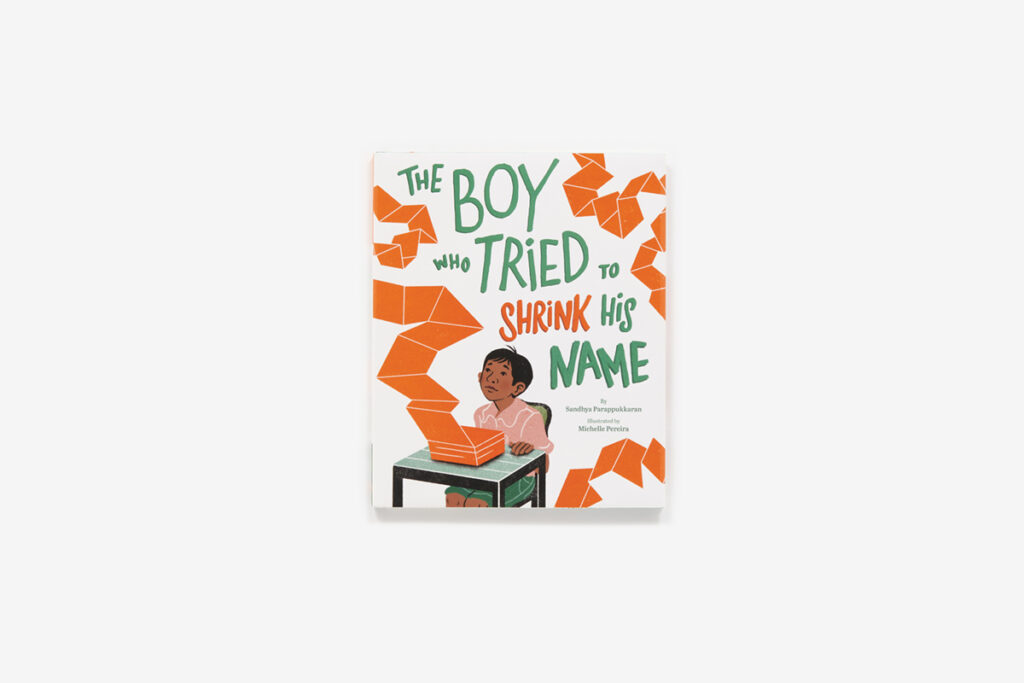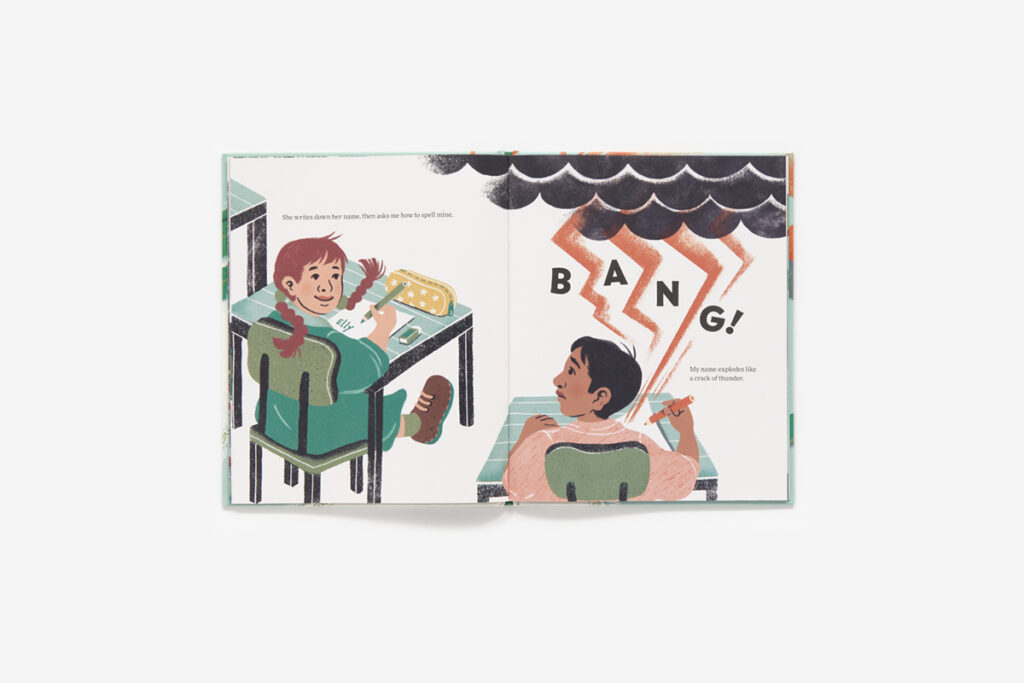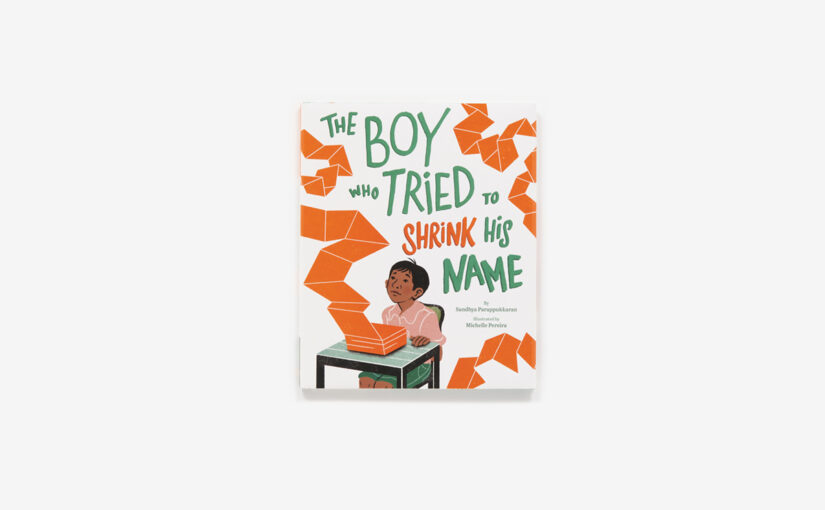Being a substitute teacher I usually go to a different class in a different school every day. Sometimes I’ll engage in long-term assignments which will afford me the opportunity to learn students’ names. Whenever I take attendance I always say this disclaimer, “If I mispronounce your name it’s not meant to be funny or insulting, so please correct me when I do.” I then go on to mispronounce a handful of their names but do try my best to state them correctly. The Boy Who Tried to Shrink His Name is a book about one of those kids. In this case, the boy’s name is Zimdalamashkermishkada and he’s a little self-conscious about his long name.

The Boy Who Tried to Shrink His Name works as an allegory that’s both overt and covert. Zimdalamashkermishkada starts his days like everyone else, but his name trips him up just like his long shoelaces. Readers will see Zimdalamashkermishkada slip as though he’s just found a banana peel with the back of his shoes. Zimdalamashkermishkada is starting school and he’s thinking about getting a shorter name. He tries washing it in hot water to shrink it, but it explodes to its normal size when a girl on the bus asks him his name.
He tries to fold his name upon itself, but it upends itself across the room when his teacher asks him to say his name again. On the walk home, he has the idea to rebrand himself as “Zim.” Zimdalamashkermishkada shares this idea with his mom and she informs him that his name has a noble and strong meaning. She also encourages him to give his classmates the opportunity to say it correctly.

The next day he sees Elly, that girl from the bus, except this time she’s skateboarding and doing some fabulous tricks. She calls him “Zim”, and he tries to correct that it’s “Zimdala….”, but stops because he’s in awe of her boarding abilities. As the two continue skating he manages to eke out one more syllable “Zimdalamash….” before he tumbles off of his board.
The two are quickly becoming good friends and Elly is invited over to his house for dinner and hears more syllables to his name. As Zimdalamashkermishkada’s skateboarding skills are improving the shoelace that used to be too long is now starting to resemble a bird that’s about to take flight. When he successfully does the one trick that’s been vexing him, his friends encourage him by saying “Go Zim!”, to which Elly corrects them by letting them know his real name. By now his shoelace is completely free from his feet and is a bright, flying bird that’s soaring ahead of the two friends.

Elementary school classrooms that have kids with long names need this book. It’ll help bridge those awkward instances where their peers want to say their names and realize that it’s OK if they can’t pronounce it on the first attempt. The Boy Who Tried to Shrink His Name will also work for those kids who have long names. It will demonstrate to them that it’s nothing to shirk from, and that people will warm up to your real name, but that it might take some time.
It is amazing how quickly kids today are able to absorb and then correctly pronounce long names. Our children are excellent at this, help us pronounce certain names when introduced to the kids, and roll their eyes at us when we get it wrong. Personally, I attribute this to the young age that they’re introduced to names like Zimdalamashkermishkada, as well as, the frequency of times they’re around them.
In any language, the more that you hear or are subjected to that name or phrase easier it gets to say. For example, in Japanese, you commonly say “I was tired” as ‘o-tsukareteita’. When I first heard that word it mentally tripped me out and left my mind swimming. After you hear it a couple of dozen times it gets easier and after two dozen times, you’re saying the phrase in any number of different ways and are able to say the opposite of it to boot.
As the world gets smaller and our classrooms have more names like Zimdalamashkermishkada this book will show kids that both sides of the long-name equation are acceptable. Your peers will eventually be able to say your name correctly and you should be confident in your name, but be patient with those who aren’t used to saying it.
The Boy Who Tried to Shrink His Name is by Sandhya Parappukkaran with illustrations by Michelle Pereira and is available on Abrams Books for Young Readers, an imprint of Abrams Books.
There are affiliate links in this post.





 Facebook
Facebook Twitter
Twitter Flickr
Flickr GooglePlus
GooglePlus Youtube
Youtube